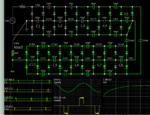sabu31
Advanced Member level 1
Dear All,
I need to develop at circuit with 5kV and 10-20mA supply DC. I need to develop it for demo purpose. So I am not looking into closed loop control and if possible transformer-less and without use of active semiconductors(mosfet,igbt). What topology could be a starting point. Is there any voltage multiplier circuit for converting utility ac to 5kV. Please suggest any topologies/reference designs/materials.
Thanks
I need to develop at circuit with 5kV and 10-20mA supply DC. I need to develop it for demo purpose. So I am not looking into closed loop control and if possible transformer-less and without use of active semiconductors(mosfet,igbt). What topology could be a starting point. Is there any voltage multiplier circuit for converting utility ac to 5kV. Please suggest any topologies/reference designs/materials.
Thanks

